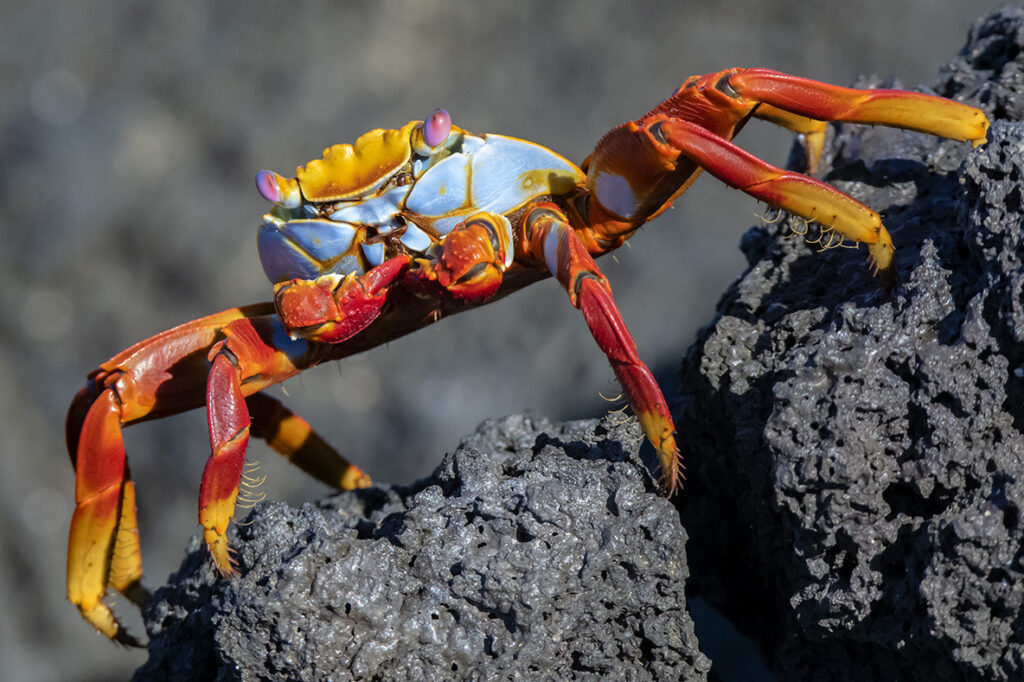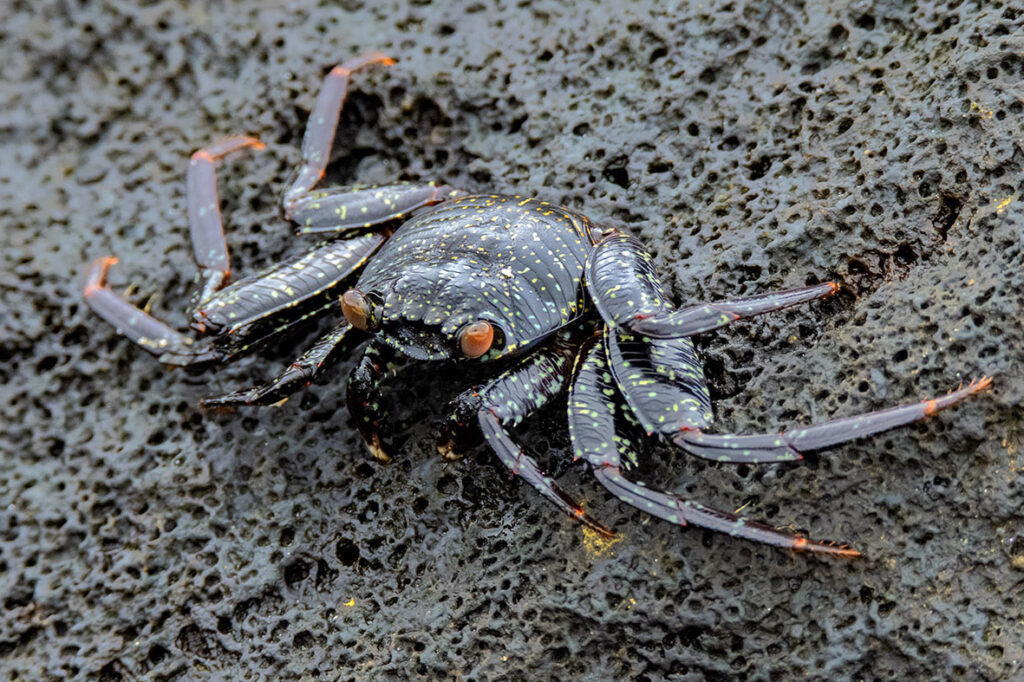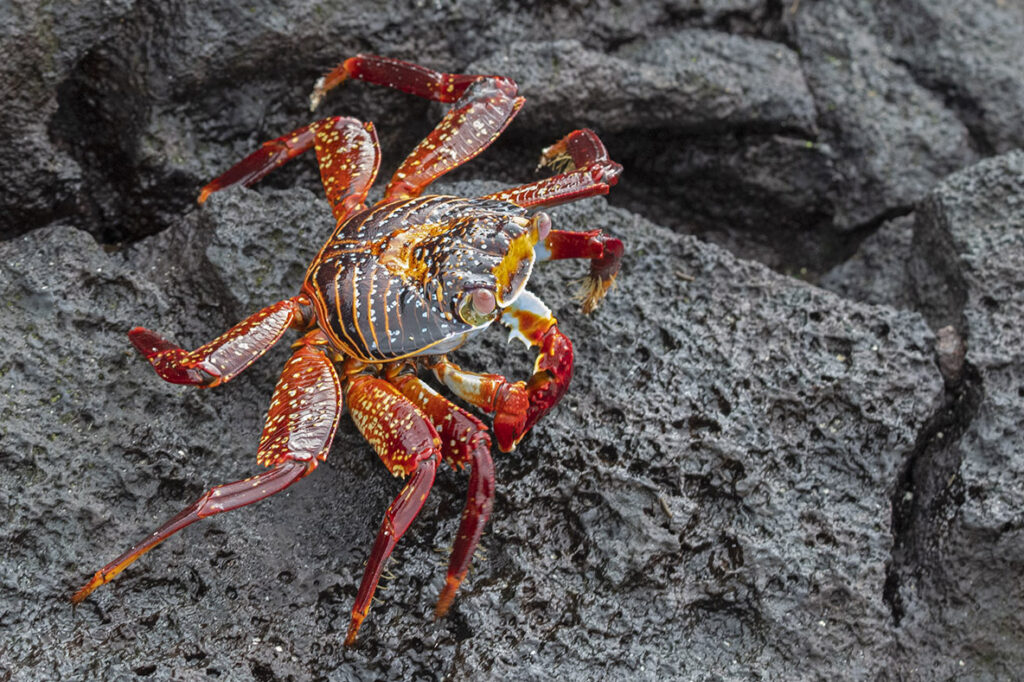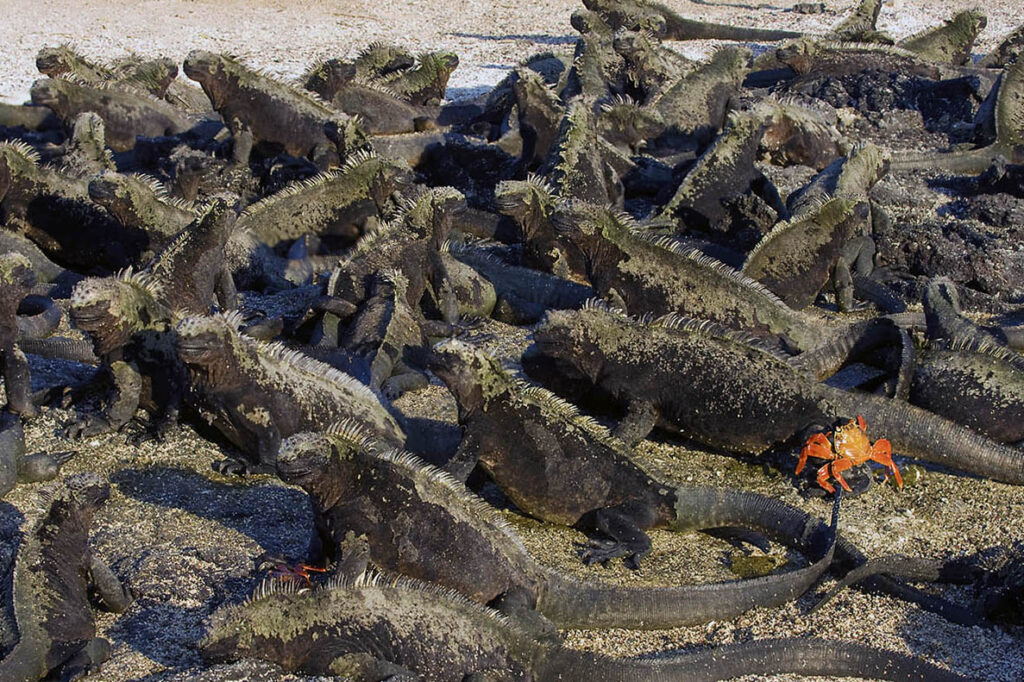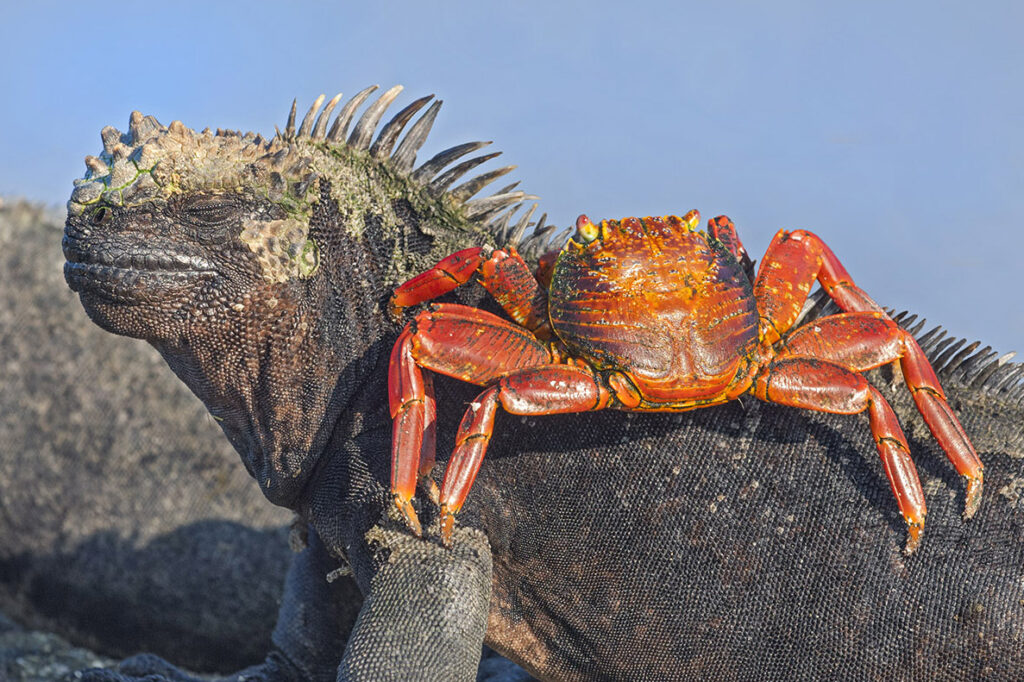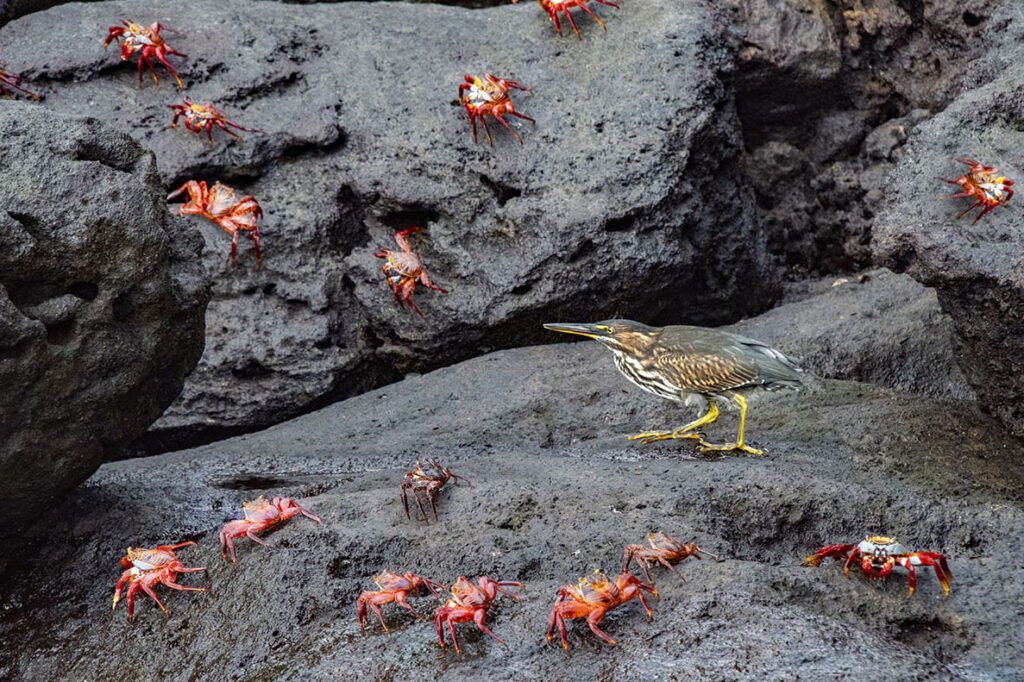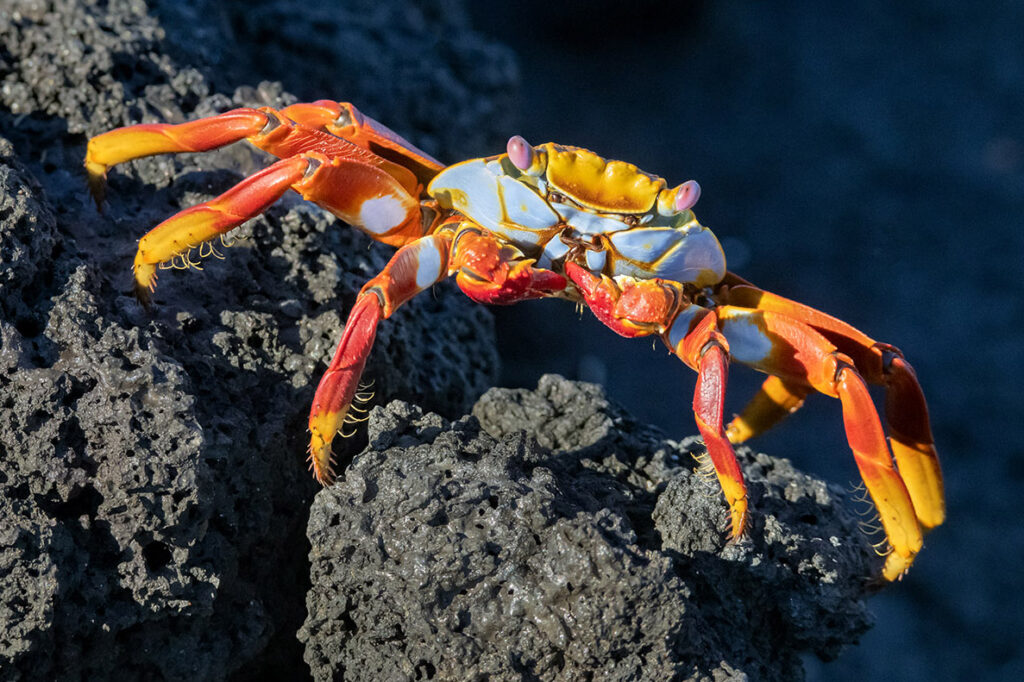

The wave-battered shore where the crabs forage for algae.
I wrote this month’s posting last June in the Galapagos Islands where I was lucky to be leading a photography tour focusing on the natural wonders of this, the most famous of archipelagos. Crabs of several species scuttle and scatter along every shoreline in the islands, but the unquestionable star of the bunch is the red shore crab, known locally as the sally lightfoot because of its ability to dart away with remarkable speed. The photogenic crab is strikingly coloured with a bright orange back, large red claws, and an electric blue belly. It looks like something you might expect a child in kindergarten to imagine how a crab should look. These showy, fleet-footed crabs often occur in small armies of scuttling legs and plucking pincers. During low tide, they nimbly forage on the carpets of slippery algae that grow on the wave-washed rocks. These flashy crustaceans are also enthusiastic scavengers, feeding on any carcass that floats ashore. They will also boldly climb over marine iguanas, searching for dead skin and juicy ticks in the cracks and crevices of the reptile’s scaly backs, while being completely ignored by the somnolent lizards.

At low tide, along some shorelines, the crabs can number in the hundreds.

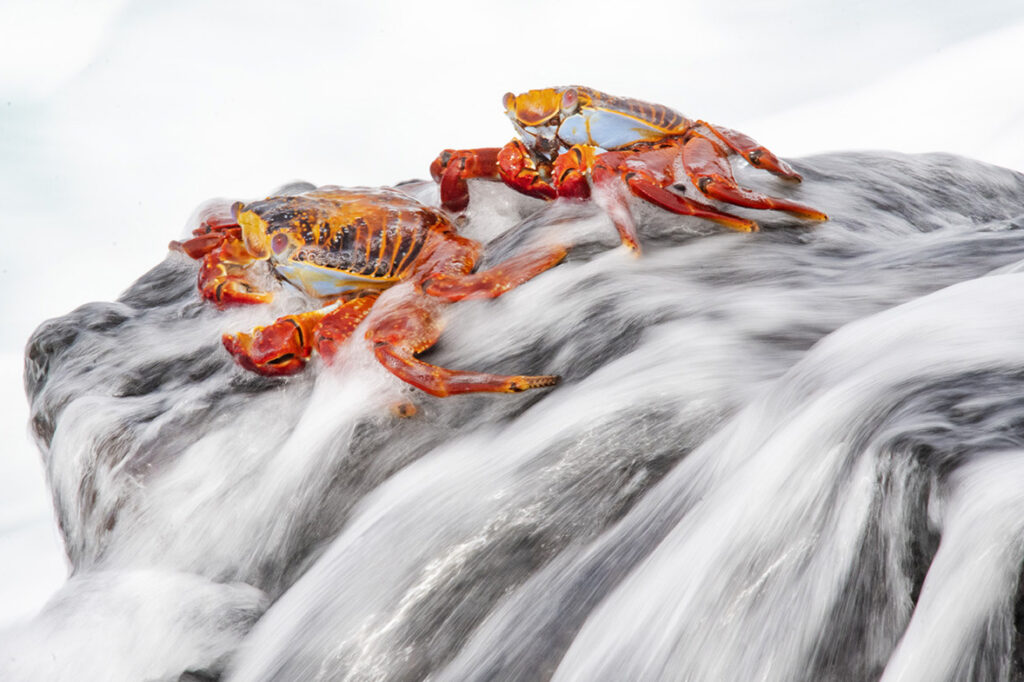
A crab clutches the rock when a wave washes over it.
Curiously, young sally lightfoots are not brightly coloured like the adults but are black and cryptic, blending in well with the lava shorelines they inhabit. Such camouflage is usually an adaptation to hide from predators, but as the crabs grow and mature they become increasingly more vividly coloured and conspicuous. So why are adult sally lightfoots so colourful? Some male animals use bright coloration to attract female partners, but female sally lightfoots are as colourful as the males so that’s not the reason. Could it be that the crabs use their bright coloration to warn predators that they are poisonous or distasteful? If this is the crabs’ intent, the plan clearly is a failure, since they are eaten by oystercatchers, frigatebirds, shorebirds, and various herons, including the lightning-necked lava heron that relies on its black plumage to camouflage its movements and allow it to sneak closer. Finally, the red coloration of adult crabs is likely derived from pigments consumed in their algal diet and thus may be an honest indicator of foraging ability and general fitness. In the end, the ultimate reason for the sally lightfoot’s bright coloration still remains a mystery.
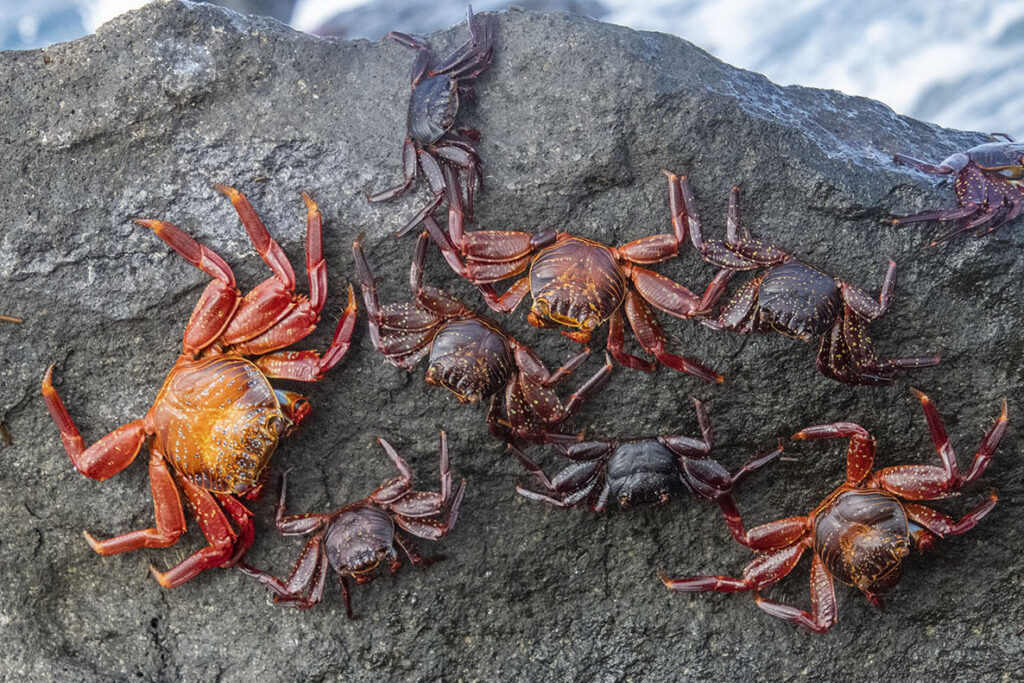
An assortment of crabs of different ages.

A crab produces foam when it is moulting its old shell.

An army of crabs forages on algae at low tide.
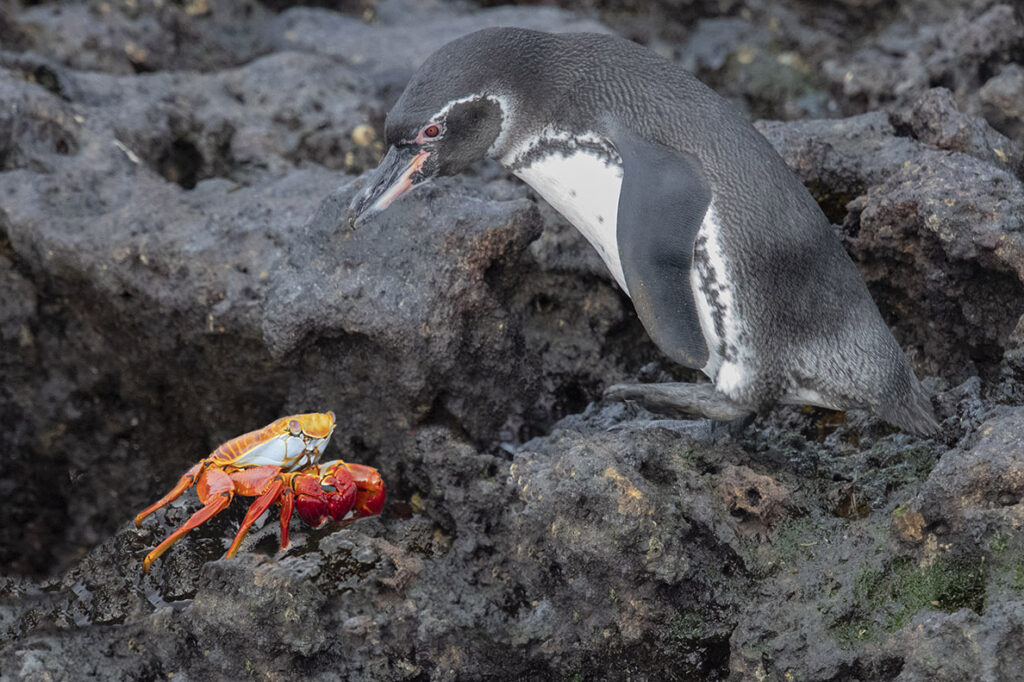
A Galapagos penguin eyes the crab.
About the Author – Dr. Wayne Lynch
For more than 40 years, Dr. Wayne Lynch has been writing about and photographing the wildlands of the world from the stark beauty of the Arctic and Antarctic to the lush rainforests of the tropics. Today, he is one of Canada’s best-known and most widely published nature writers and wildlife photographers. His photo credits include hundreds of magazine covers, thousands of calendar shots, and tens of thousands of images published in over 80 countries. He is also the author/photographer of more than 45 books for children as well as over 20 highly acclaimed natural history books for adults including Windswept: A Passionate View of the Prairie Grasslands; Penguins of the World; Bears: Monarchs of the Northern Wilderness; A is for Arctic: Natural Wonders of a Polar World; Wild Birds Across the Prairies; Planet Arctic: Life at the Top of the World; The Great Northern Kingdom: Life in the Boreal Forest; Owls of the United States and Canada: A Complete Guide to their Biology and Behavior; Penguins: The World’s Coolest Birds; Galapagos: A Traveler’s Introduction; A Celebration of Prairie Birds; and Bears of the North: A Year Inside Their Worlds. In 2022, he released Wildlife of the Rockies for Kids, and Loons: Treasured Symbols of the North. His books have won multiple awards and have been described as “a magical combination of words and images.”
Dr. Lynch has observed and photographed wildlife in over 70 countries and is a Fellow of the internationally recognized Explorers Club, headquartered in New York City. A Fellow is someone who has actively participated in exploration or has substantially enlarged the scope of human knowledge through scientific achievements and published reports, books, and articles. In 1997, Dr. Lynch was elected as a Fellow to the Arctic Institute of North America in recognition of his contributions to the knowledge of polar and subpolar regions. And since 1996 his biography has been included in Canada’s Who’s Who.



